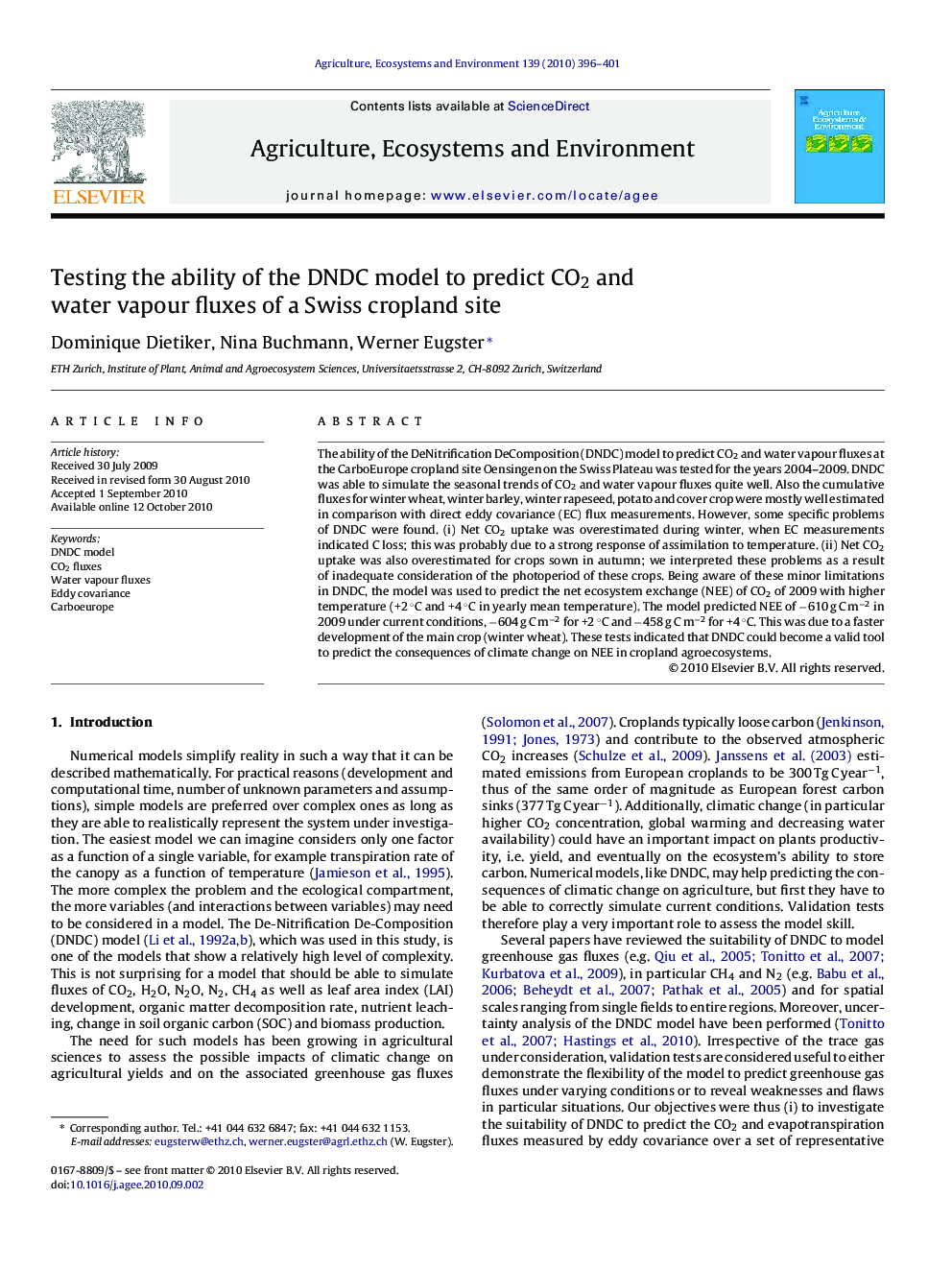| Article ID | Journal | Published Year | Pages | File Type |
|---|---|---|---|---|
| 2414859 | Agriculture, Ecosystems & Environment | 2010 | 6 Pages |
The ability of the DeNitrification DeComposition (DNDC) model to predict CO2 and water vapour fluxes at the CarboEurope cropland site Oensingen on the Swiss Plateau was tested for the years 2004–2009. DNDC was able to simulate the seasonal trends of CO2 and water vapour fluxes quite well. Also the cumulative fluxes for winter wheat, winter barley, winter rapeseed, potato and cover crop were mostly well estimated in comparison with direct eddy covariance (EC) flux measurements. However, some specific problems of DNDC were found. (i) Net CO2 uptake was overestimated during winter, when EC measurements indicated C loss; this was probably due to a strong response of assimilation to temperature. (ii) Net CO2 uptake was also overestimated for crops sown in autumn; we interpreted these problems as a result of inadequate consideration of the photoperiod of these crops. Being aware of these minor limitations in DNDC, the model was used to predict the net ecosystem exchange (NEE) of CO2 of 2009 with higher temperature (+2 °C and +4 °C in yearly mean temperature). The model predicted NEE of −610 g C m−2 in 2009 under current conditions, −604 g C m−2 for +2 °C and −458 g C m−2 for +4 °C. This was due to a faster development of the main crop (winter wheat). These tests indicated that DNDC could become a valid tool to predict the consequences of climate change on NEE in cropland agroecosystems.
Research highlights▶ DNDC was able to simulate the seasonal trends of CO2 and water vapour. ▶ Net CO2 uptake was overestimated for crops sown in autumn. ▶ Net CO2 uptake was overestimated during winter, when EC measurements indicated C loss.
